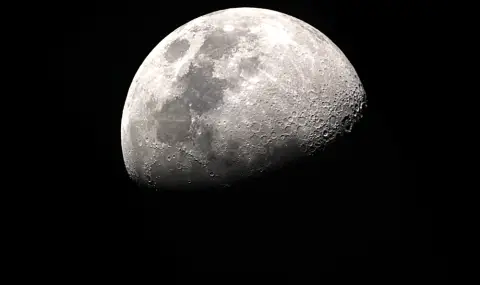In the coming days, China plans to send a robotic spacecraft on a two-way trip to the far side of the moon, Reuters and News.bg report.
This will be the first of three technically complex missions that will pave the way for the landing of a Chinese crew and the establishment of a base on the south pole of the Moon.
After the first Chang'e mission in 2007, named after the mythical Chinese moon goddess, China made a leap forward in exploring the Earth's satellite, narrowing the technology gap with the United States and Russia.
In 2020, China took samples from the near side of the moon in its first sample retrieval in over 40 years, confirming for the first time that it can safely return an unmanned spacecraft to Earth from the lunar surface.
This week, China is expected to launch Chang'e-6, using the backup spacecraft from the 2020 mission, and pick up soil and rocks from the side of the moon that is permanently facing Earth.< /p>
With no direct line of sight to Earth, Chang'e-6 must rely on a relay satellite orbiting the moon during its 53-day mission, including its first ascent attempt from the "hidden" side of the Moon on its return.
The same relay satellite will support the uncrewed Chang'e-7 and 8 missions in 2026 and 2028, respectively, when China begins exploring the South Pole for water and builds an outpost with Russia. Beijing aims to send its own astronauts to the moon by 2030
China's plans for the moon's south pole have alarmed NASA, whose director Bill Nelson has repeatedly warned that the Asian country will claim all water resources as its own. Beijing assures that it remains committed to cooperation with all countries to build "shared" future.
On Chang'e-6, China will carry payloads from France, Italy, Sweden and Pakistan, and on Chang'e-7 - payloads from Russia, Switzerland and Thailand.
US law prohibits NASA from any cooperation, directly or indirectly, with China.
Under the separate Artemis program, led by NASA, American astronauts will land near the South Pole in 2026, becoming the first men on the moon since 1972.
"International cooperation is key to lunar exploration,", emphasized Clive Neal, professor of planetary geology at the University of Notre Dame. "It's just that China and the US are not cooperating at the moment. I hope that happens".
Chang'e 6 will attempt to land on the northeast side of the vast South Pole Basin - Aitkin, the oldest known impact crater in the Solar System.
The southernmost landing in history was made in February by IM-1, a joint mission between NASA and the Texas-based private firm Intuitive Machines.
After landing at Malapert A, a site near the south pole that was thought to be relatively flat, the spacecraft pitched sharply to one side due to a number of technical problems, demonstrating the high-risk nature of lunar landings.
The South Pole is described by scientists as the "golden belt" for exploring the moon.
Polar ice can support long-term research bases. India's Chandrayaan-1, launched in 2008, confirmed the presence of ice in the polar craters.
The return of the Chang'e-6 sample may shed more light on the early evolution of the Moon and the inner solar system.
The lack of volcanic activity on the far side of the Moon means there are more craters uncovered by ancient lava flows, which likely preserved material from the Moon's early formation.
So far, all lunar samples taken by the United States and the former Soviet Union in the 1970s and China in 2020 have been from the near side of the Moon, where volcanism is much more active.
After a successful landing, Chang'e-6 will collect about 2 kilograms of samples.
"If successful, China's Chang'e-6 mission will be a milestone,'' said Leonard David, author of "Moon Rush: The New Space Race". "Robotically reaching the far side of the Moon and bringing samples back to Earth helps fill in the blanks about our Moon's still-unclear origins.
